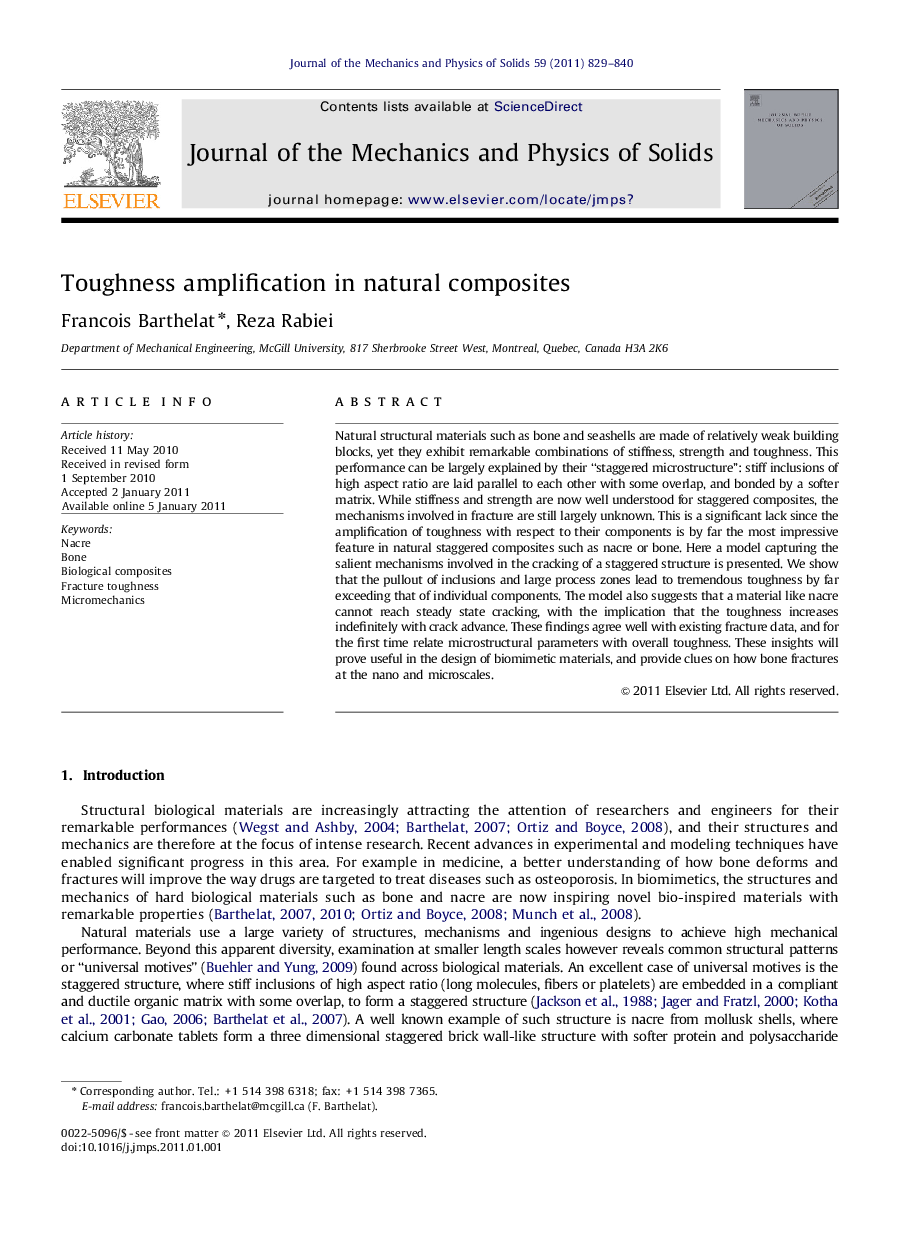| Article ID | Journal | Published Year | Pages | File Type |
|---|---|---|---|---|
| 793298 | Journal of the Mechanics and Physics of Solids | 2011 | 12 Pages |
Natural structural materials such as bone and seashells are made of relatively weak building blocks, yet they exhibit remarkable combinations of stiffness, strength and toughness. This performance can be largely explained by their “staggered microstructure”: stiff inclusions of high aspect ratio are laid parallel to each other with some overlap, and bonded by a softer matrix. While stiffness and strength are now well understood for staggered composites, the mechanisms involved in fracture are still largely unknown. This is a significant lack since the amplification of toughness with respect to their components is by far the most impressive feature in natural staggered composites such as nacre or bone. Here a model capturing the salient mechanisms involved in the cracking of a staggered structure is presented. We show that the pullout of inclusions and large process zones lead to tremendous toughness by far exceeding that of individual components. The model also suggests that a material like nacre cannot reach steady state cracking, with the implication that the toughness increases indefinitely with crack advance. These findings agree well with existing fracture data, and for the first time relate microstructural parameters with overall toughness. These insights will prove useful in the design of biomimetic materials, and provide clues on how bone fractures at the nano and microscales.
